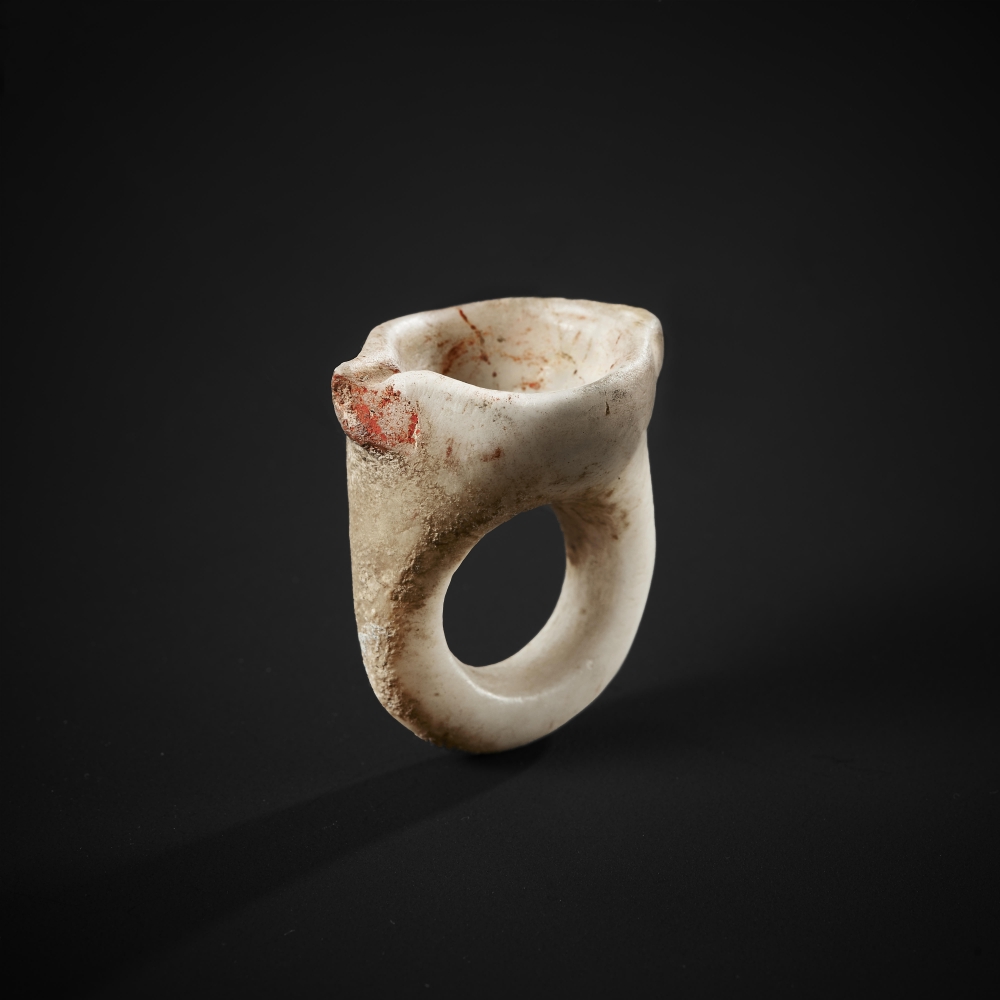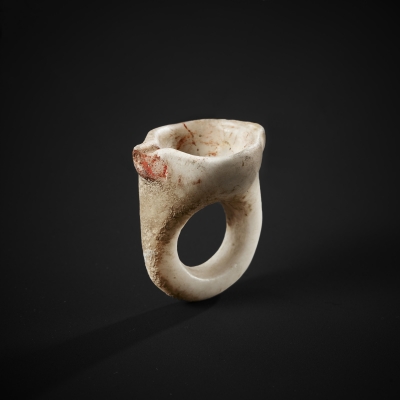Art Market (London), by 1971;
Illustrated in catalogue of Robin Symes Ancient Art, published London, June 1971;
Sold to a Japanese Private Collection (surname Ogawa);
Consigned by his inheritors to Sotheby’s London, Antiquities, 15 July 1980;
Collection of G. Callimanopulos (U.S.A.), by 1987, at which time illustrated in Virginia Museum of Fine Arts exhibition catalogue;
With Ward & Company (New York) by 2004;
Sold to a Private Collection (New York), 2004-2019.
“Early Cycladic Art in North American Collections” Virginia Museum of Fine Arts, 1987;
“Ancient Art of the Cyclades” Katonah Museum of Art, October 1 – December 31, 2006;
“Art of the Cyclades” Museum Zervos, France, June 24 – November 15, 2011.
Ancient Art, (Robin Symes Ancient Art Catalogue, June 1971), no. 15;
Sotheby’s London, Antiquities (15 July 1980), lot no. 132;
P. Getz-Preziosi, Early Cycladic Art in North American Collections (Washington University Press, Seattle and London 1987) p. 326, no. 146;
P. Getz-Gentle, Stone Vessels of the Cyclades in the Early Bronze Age (Pennsylvania State University 1996) p. 112-3, pl. 62a;
P. Getz-Gentle, Ancient Art of the Cyclades (Katonah Museum of Art, Exh. Cat. 2006) 51 cat. no. 64;
A. Caubet, Zervos et l’Art des Cyclades (Museum Zervos, France, June 24- November 15, 2011), p. 50, no. 33.
Click here to download the factsheet
The present carved ring bowl is an extremely rare example of Early Cycladic Art, less than a dozen of which are known today. Two are made of jadelike stone, one of orange buff stone, and only two are made from marble with plain bowls surmounted on top. While much of the context regarding the initial unearthing of these rings is now lost or unknown, one of the jadelike rings and the ring of buff stone were found on Naxos. It is thus probable that all the rings were produced in a single workshop if not also found there. Our ring is said to have been found buried in a grave with a marble statuette of a harp player carved in the Early Spedos style.
The present ring can fit onto a smaller finger, though the size of ring holes among the comparable examples varies to a great extent, with two being so large as to have fit even a large man’s finger or thumb snugly. If the ring were worn ceremonially, it may have been held in place by the wearer making a fist. Alternatively, Pat Getz-Gentle (1996, p. 113) has suggested that these rings may not have been designed to be worn but rather were mounted on a wooden rod.
Of all the ring bowls, only this example retains vivid traces of cinnabar. The presence of this paint perhaps indicates the function of the ring, which may have held ritual cosmetic pigment, to be applied by the wearer on the skin or another surface. On the other hand, the entire bowl may have initially been painted and served a different ceremonial purpose, perhaps at times being filled with water or oil. A third possibility is that the presence of the bowl on the ring is entirely symbolic, though the specific meaning is of course lost to us now.
It is perhaps not a coincidence that the present example is said to have been found with a seated harp player, as the same has been reported in two other cases. The semantic connection between these artworks is both elusive and intriguing, but their shared context allows scholars to posit a date for the ring bowls alongside that of the harp players, in the period called Early Cycladic II, ca. 2700-2400/2300 B.C.

